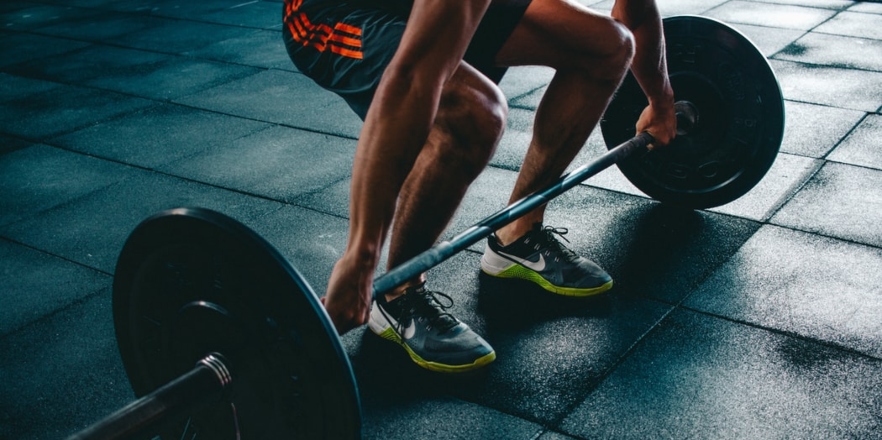
As restrictions ease and people get back into their fitness routines from before lockdown, working out what impact the lockdown period may have had upon your body is important.
On 11 March 2020, the World Health Organization declared COVID-19 to be a global pandemic with England entering into a state of lockdown on 23 March 2020. With some degree of restrictions remaining in place for over 100 days and counting, and with indoor gyms being closed throughout this time (since 21 March 2020), it is not surprising that physical activity reduced during lockdown. A study of over 455,00 individuals from 187 countries and producing more than 19 million daily measurements [1] indicated that step count (a proxy for physical activity) was reduced by 5.5% Worldwide within ten days of the pandemic declaration. Thereafter, within 30 days, a 27.3% decrease in mean steps occurred with regional variations highlighting that closer to 50% peak reductions had occurred in places (e.g., Italy exhibited a 48.7% maximal decrease). When combined with reports of changes to alcohol intake (21% adults who drink alcohol are drinking more often since lockdown began, and 28% agreeing to having drunk more alcohol than usual during lockdown[2]), and perceptions of weight gain during lockdown, some degree of expectation management will likely be beneficial when resuming a fitness routine – but what are the consequences of reduced physical activity that need to be accounted for?
Medical research has for a long time investigated the effects of experimental bed rest and limb immobilisation as a means to explore the impact of disuse on the loss of muscle mass and strength. It would not be uncommon for some studies to report significant losses in strength and muscle mass in as little as 5-7 days of inactivity from bed rest – so, while it is an extreme example, and acknowledging that attempts may have been made to substitute gym-based exercises with home-based body weight workouts, ignoring the long term effects that lockdown may have had on your body will likely lead to disappointment, or even worse – an injury, when getting back into your fitness routine and doing too much too soon by expecting to pick up where you left off pre-lockdown.
In a study published in 2016 [3] that required seven days of leg immobilization, either where participants wore a full leg cast or carried out strict bed rest, the cross-sectional area of the quadriceps (a measure of skeletal muscle mass) reduced by approximately 3-5%. This reduction in muscle mass was accompanied by a 7% decline in maximal strength. Irrespective of the method of immobilisation, just seven days of disuse led to ~0.6% leg muscle loss per day. In some studies, differential responses between young and older participants have also been observed, with the leg lean mass and muscle strength losses resulting from inactivity being more severe for those aged 60-75 years versus participants aged 18-35 years [4].
However, the good news is that such negative changes are reversible – with some comparability of responses between older and younger exercisers. Eight weeks of structured rehabilitation training that included high intensity eccentric (force produced during muscle-lengthening) resistance exercises were performed three times per week (every other day) and increased incrementally to maintain intensity. Research participants were encouraged to maintain exercise intensity in the somewhat hard/hard range (i.e., rated 13–16 on a 6-20 perceived exertion scale) throughout each session. Even in the case of the extreme bed rest examples cited, when combined with post-workout whey protein ingestion, such progressive exercise restored muscle mass and strength losses back to at least pre-immobilisation values 4. Therefore, despite age-related differences in muscle atrophy occurring during short-term bed rest, both older and younger adults appear able to stimulate a muscle growth response during rehabilitation.
Interestingly, in such studies, while the perception of the difficulty of the exercises should have remained comparable throughout the study, the workload completed was higher at the end versus the start of the exercise regime; a finding which emphasises the importance of implementing a gradual return post inactivity. Similar to professional sport, if athletes do too much too soon, it can be detrimental, hence why a pre-season period in football aims to appropriately condition players to the demands anticipated in subsequent competition. Likewise, a player returning from injury undertakes a graduated return to play protocol that progressively sees them work towards full training/competition. Therefore, when returning to your usual fitness regime, a gradual and progressive return to the loads and intensities used before lockdown should be considered. Similarly, supporting your return to fitness with appropriate nutrition, hydration and recovery practices before, during and after each session will smooth the transition back to pre-lockdown performances – and hopefully beyond.
Mark Russell is a Professor of Performance Nutrition and Applied Exercise Physiology at Leeds Trinity University and an expert consultant to various elite and professional sports teams. Prof. Russell leads the Enhancing Human Performance research theme and currently supervises a number of doctoral students at Leeds Trinity University who are investigating topics associated with enhancing the match-day performance of team sports players.
[1] Tison et al. (2020): https://www.acpjournals.org/doi/10.7326/M20-2665
[2] https://alcoholchange.org.uk/blog/2020/drinking-in-the-uk-during-lockdown-and-beyond
[3] Dirks et al. (2016): https://onlinelibrary.wiley.com/doi/full/10.1111/apha.12699
[4] Tanner et al. (2015): https://physoc.onlinelibrary.wiley.com/doi/epdf/10.1113/JP270699